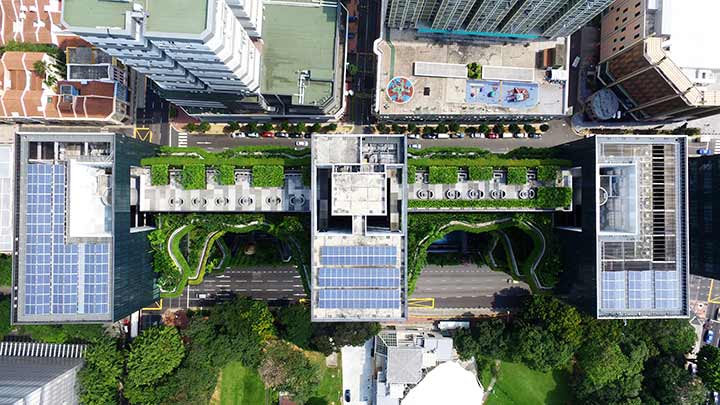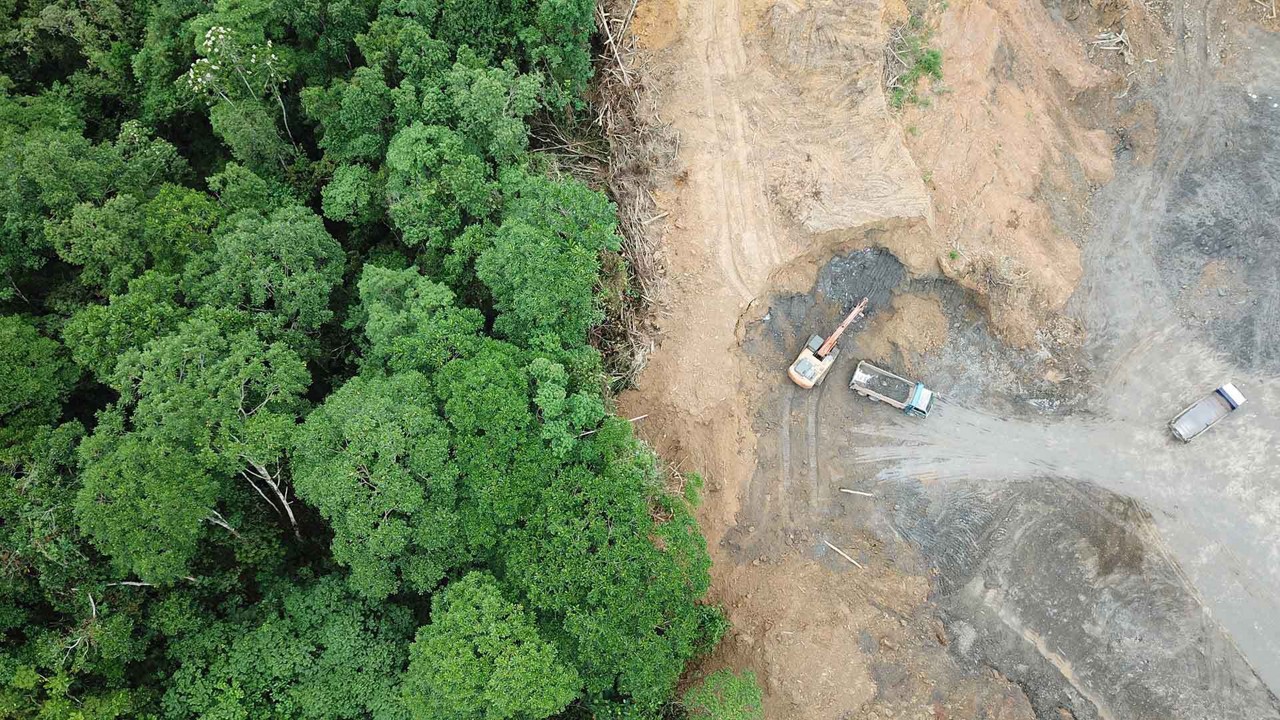Get the right experience for you. Please select your location and investor type.
IMPORTANT NEWS: Transition of investment management responsibilities
First Sentier Group, the global asset management organisation, has announced a strategic transition of Stewart Investors' investment management responsibilities to its affiliate investment team, FSSA Investment Managers, effective Friday, 14 November close of business EST.

Sustainable Finance Disclosures Regulation (SFDR)
Sustainable Finance Disclosures Regulation
(Regulation (EU) 2019/2088)
The EU Sustainable Finance Action Plan, includes mandatory reporting and disclosure regulations in the form of the Sustainable Finance Disclosures Regulation (SFDR). The SFDR establishes a hierarchy of categories based on the products sustainability objective.
Asset management organisations which promote and sell funds and supply portfolio management services within the EU are required to provide certain information to their clients under SFDR. The regulation specifically applies to Stewart Investors funds within First Sentier Investors Global Umbrella Fund plc.
Under Article 6 of SFDR all funds have to disclose the way in which sustainability risks are included into investment decisions and the results of assessments of the likely impact of sustainability risks on the performance of the fund. Funds may also be classified as Article 8 (if they promote environmental or social characteristics) or Article 9 (if they have a sustainable investment objective). The Stewart Investors strategies are aligned to Article 9. By investment strategy, we mean our investments in different regions across the world, which we group geographically.
Article designations for our strategies
| Article designation | Summary features | Investment strategy alignment |
|---|---|---|
| Article 6 | All products must disclose the manner in which sustainability risks are integrated into their investment decisions. | All strategies
|
| Article 9 | Any product which has a clear sustainability objective, incorporating both environmental and social aims, and that also meets various sustainability-related disclosure and reporting requirements. |
* Also includes Global Emerging Markets Leaders products within this strategy.
What does Article 9 require us to do?
While an Article 9 categorisation does not change our investment objective or our approach, it does require us to change the way we show and report on the fund's sustainable investment objective. We have been developing this over the last few years and examples of the steps we have taken include our work on Human Development Pillars, Project Drawdown climate solutions and Portfolio Explorer which provides information on the investment rationale for every company we invest in, the contribution it makes to sustainable development, key risks and topics that we discuss with the companies.
Below is a summary of disclosures and explanations we are required to make under SFDR.
Sustainable investment objective
The sustainable investment objective of the strategies is to invest in companies which both contribute to, and benefit from, sustainable development, achieving positive social and environmental sustainable outcomes.
All companies in which we invest contribute to improving human development, while many also contribute to positive environmental outcomes.
We assess positive social outcomes by reference to the below human development pillars. We have developed these human development pillars, by reference to, amongst other things, the UN Human Development Index.
We assess positive environmental outcomes by reference to the climate solutions developed by Project Drawdown* a non-profit organisation that has considered over 90 different climate solutions that it believes will contribute to reaching ‘drawdown’, i.e. the future point in time when levels of greenhouse gases in the atmosphere stop climbing and start to steadily decline.
The Prospectus for First Sentier Investors Global Umbrella Fund plc includes the latest SFDR appendix disclosing the required pre-contractual information for the Stewart Investors Article 9 funds such as environmental and social objectives (including any alignment to the EU Taxonomy Regulation).
Summary of sustainable investment objectives which apply to all strategies:
Does this financial product have a sustainable investment objective? Yes
% minimum of sustainable investments with an environmental objective: 40%
- In economic activities that qualify as environmentally sustainable under the EU Taxonomy Regulation - No
- In economic activities that do not qualify as environmentally sustainable under the EU Taxonomy Regulation – Yes
% minimum of sustainable investments with a social objective: 90%
Sustainability indicators
We consider that a company contributes to, and benefits from, sustainable development if its activities lead to positive social outcomes and may also contribute to positive environmental outcomes. The contribution of investments to the social and environmental objectives are assessed by reference to two framework indicators – our human development pillars and Project Drawdown climate change solutions.
Positive social outcomes
We will only invest in a company if we believe its activities lead to a positive social outcome.
We assess positive social outcomes by reference to the below human development pillars. We have developed these human development pillars, by reference to, amongst other things, the UN Human Development Index.
- Health and well-being – improved access to and affordability of nutrition, healthcare and hygiene, water and sanitation
- Physical infrastructure – improved access to and affordability of energy and housing
- Economic welfare – safe employment offering a living wage and opportunities for advancement, access to finance and improved standards of living
- Opportunity and empowerment – improved access to and affordability of education and information technology
Visit our Portfolio Explorer tool to find out more about the pillars and the diverse contributions companies are making to human development.
Positive environmental outcomes
We assess positive environmental outcomes by reference to the climate solutions developed by Project Drawdown* a non-profit organisation that has considered over 90 different climate solutions that it believes will contribute to reaching ‘drawdown’, i.e. the future point in time when levels of greenhouse gases in the atmosphere stop climbing and start to steadily decline.
Below is a list of climate solutions together with corresponding examples we believe lead to positive environmental outcomes:
- Food system - Sustainable farming, food production and distribution of food-related products and services
- Energy - adoption of renewable energy and other clean energy and related technologies
- Circular economy and industries - improved efficiency, reduced waste, and new business models for closing resource loops in linear value chains and production processes
- Human development - Advancement of human rights and education that drive environmental conservation and sustainable use of resources
- Transport - efficient transport technologies and growth in fossil fuel free transportation options
- Buildings - products and services which reduce the environmental footprint of the built environment, including energy efficiency, electrification, improved design, and use of alternative materials
- Water - less energy intensive methods for treating, transporting and heating water
- Conservation and restoration - supporting deforestation free and environmentally regenerative supply chains, operations and end of life impacts
Not every company we invest in will necessarily contribute to an environmental solution.
Visit our Portfolio Explorer tool to find out more about the solutions and the diverse contributions companies are making to climate change.
In assessing whether a company ‘contributes to, and benefits from’ sustainable development, we will consider whether:
- there is either a direct or enabling** link between the activities of the company and the achievement of a positive social or environmental outcome;
- the company can benefit from any contribution to positive social or environmental outcomes through sales or growth opportunities of the company, strategic initiatives that are backed by research and development or expenditure, or from the company’s strong culture e.g. for equity and diversity; and
- the company recognises potential negative social or environmental outcomes associated with its product or services and works towards minimising such outcomes (e.g., a company that sells affordable nutritious food products in plastic packaging, but is investigating alternative packaging options).
No significant harm to the sustainable investment objectives
Our investment strategies only invest in companies which both contribute to, and benefit from, sustainable development, achieving positive social and environmental outcomes.
Any exposure to harmful or controversial products, services or practices is monitored on at least a quarterly basis. For harmful products and services which are sales-generating, we will not invest in a company if those products or services represent 5% or more of the company’s sales. In other areas where harmful or controversial activities are not attributable to sales (for example, employee or supply chain issues) we use internal analysis and research from external providers to monitor and assess those companies. Our position statement on harmful and controversial products and services defines the harmful business activities we avoid as a result of our investment approach, our materiality thresholds and quarterly disclosure of any investments we make that are above the stated thresholds.
Adverse impacts on sustainability factors
Certain factors which may indicate an adverse impact for sustainability and which are relevant to each company in which we invest, are taken into account through our research, company engagement, adherence to our position statement on harmful and controversial products and services, group-wide exclusion policies and third-party research providers.
We meet with companies on an on-going basis to continuously assess their sustainability credentials. Where we identify changes to a company’s sustainability positioning through either meetings, ongoing monitoring and reviewing their annual reports, we will re-evaluate the investment case.
Our investments are assessed on an ongoing basis by external service providers including controversy monitoring, product involvement, carbon footprints and other impact measures, and breaches of social norms including the OECD Guidelines for Multinational Enterprises and the UN Guiding Principles on Business and Human Rights.
The Principal Adverse Sustainability Indicators (as prescribed under the SFDR) are incorporated into our company analysis, team discussion and engagement programme. Every investment must do no significant harm, based on the adverse impact indicator assessment. It is possible that an investment does no significant harm but still has some adverse sustainability impacts. In those cases, we shall engage with the company either directly or as part of collaborations with other investment institutions.
Fund level data on the principaI adverse sustainability indicators is disclosed in the SFDR periodic reports.
EU Taxonomy Regulation
The EU Taxonomy Regulation considers six environmental objectives - climate change mitigation, climate change adaptation, sustainable use and protection of water and marine resources, transition to a circular economy, pollution prevention and control, and the protection and restoration of biodiversity and ecosystems.
Climate change mitigation and adaptation are currently in scope for our funds. Our funds do not have a minimum share of investments which are either transitional and enabling activities for the purposes of the EU Taxonomy Regulation. We report on the data that is available and monitor the availability of data as the new objectives fall into scope.
We do not invest in fossil gas and/or nuclear energy related activities that comply with the EU Taxonomy Regulation.
Reporting
The SFDR Level 2 reporting template for each of our Article 9 funds is available in a standalone document and also within the First Sentier Investors Global Umbrella Fund plc 2022 Annual Report. The social and environmental outcomes for the Funds are also available on the ESG reporting page.
Below are links to the firm-level disclosures required to be made under SFDR by the First Sentier Investors group.
Article 3 – Policy relating to the integration of sustainability risks in our investment decision-making process.
Article 4 - Transparency of adverse sustainability impacts at entity level – Principal Adverse Impacts Statement.
Article 5 - Transparency of remuneration policies in relation to the integration of sustainability risks.
Article 10 - Transparency of the promotion of environmental or social characteristics and of sustainable investments on websites.
The Prospectus for the First Sentier Investors Global Umbrella Fund plc includes the latest SFDR appendix disclosing the required pre-contractual information for the Stewart Investors Article 9 funds such as environmental and social objectives (including any alignment to the EU Taxonomy Regulation), sustainability indicators, and principle adverse impacts.
The SFDR Level 2 reporting template for each of our Article 9 funds is available in a standalone document and also within the First Sentier Investors Global Umbrella Fund plc 2022 Annual Report.
Related articles
* Any reference to Project Drawdown is to describe the publicly available materials utilised by Stewart Investors in formulating its sustainability analysis. It is not intended to be, and should not be, read as constituting or implying that Project Drawdown has reviewed or otherwise endorsed the Stewart Investors sustainability assessment framework.
**A direct link would arise where the goods an entity produces or the services it provides are the primary means through which the positive social or environmental outcome can be achieved (e.g. solar panel manufacturers or installers).
An enabling link would arise if the goods a company produces or services it provides enable other companies to contribute towards the achievement of the positive social or environmental outcome (e.g. manufacturers of critical components that are used as inputs in the manufacture of solar panels).



